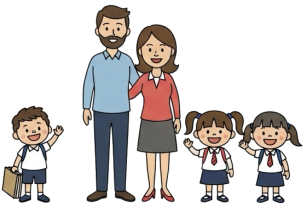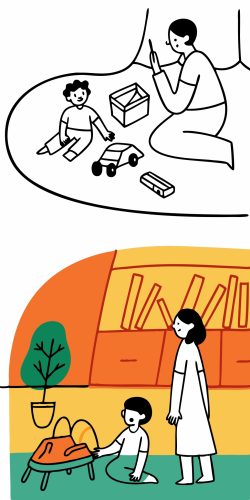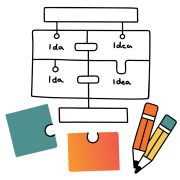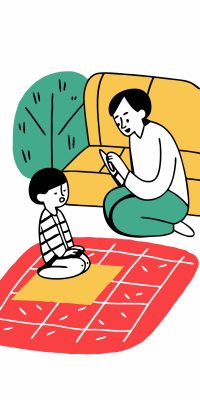
Question More, Action Knowledge.
Remember, at QMAK, we don’t just teach; we empower. We don’t just inform; we inspire. We don’t just question; we act. Become a Gold Member, and let’s unlock your child’s full potential, one question at a time.

Children learn most powerfully by observing and imitating the significant adults in their lives.
When parents and caregivers demonstrate resilience, optimism, and constructive problem-solving in their own behavior, they provide a living template that shapes how children respond to life’s challenges.
These activities focus on intentionally modeling the attitudes and behaviors that naturally counter self-pity.
Through thoughtful demonstration and shared experiences, you show your child not just what to do, but how to approach life with resilience, positivity, and confidence—skills that are absorbed through observation rather than instruction alone.
Purpose: To share personal experiences of resilience and growth that provide children with real-life examples of overcoming challenges positively.

Develop a repertoire of age-appropriate, impactful narratives:
Present stories in a way that fosters connection and learning:
Emphasize elements that counter self-pity tendencies:
Guide conversation that deepens understanding:
Create an ongoing story collection that reinforces growth mindset:

Purpose: To demonstrate a positive, solution-focused outlook in everyday interactions, showing children how to find opportunity and learning in all situations.

Develop your own realistic positive thinking patterns:
Demonstrate optimistic language and framing:
Show how to find opportunity in difficulty:
Establish routines that reinforce positive perspectives:
Model healthy positivity that acknowledges reality:

Purpose: To demonstrate effective problem-solving approaches while actively involving children in the process, showing them how to address challenges constructively.

Choose issues that provide valuable learning opportunities:
Demonstrate a systematic approach to addressing challenges:
Create genuine opportunities for involvement:
Demonstrate important mindsets and approaches:
Reinforce learning and build problem-solving identity:

Purpose: To demonstrate healthy emotional awareness, expression, and regulation, showing children that all feelings are acceptable while teaching constructive ways to manage them.

Strengthen your personal emotional intelligence:
Demonstrate recognition and naming of feelings:
Show healthy ways to communicate feelings:
Demonstrate healthy ways to manage feelings:
Show how to learn from emotional situations:

Purpose: To demonstrate the process of setting meaningful goals, persisting through challenges, and experiencing the satisfaction of achievement through your own example.
Choose goals that provide valuable modeling opportunities:
Demonstrate thoughtful planning and preparation:
Show how to handle inevitable obstacles:
Model recognition of effort and accomplishment:
Model thoughtful processing of the experience:

These modeling activities help children develop:

Remember that your example speaks much louder than your words. Children learn most powerfully through observing the significant adults in their lives handling everyday situations with resilience and positivity.

The goal is not perfection, but intentionality—being conscious of what your behavior is teaching your child about how to approach life’s challenges and joys. By modeling resilience, optimism, and healthy emotional management, you provide your child with living lessons that naturally counter tendencies toward self-pity.

Remember, at QMAK, we don’t just teach; we empower. We don’t just inform; we inspire. We don’t just question; we act. Become a Gold Member, and let’s unlock your child’s full potential, one question at a time.